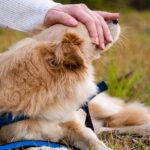As a dog owner, it’s important to understand which breeds are considered to be the most aggressive. Knowing this information can help you prepare yourself to properly handle your pup should they display any aggressive behavior. In this article, we will be discussing the Mastiff, Bulldog, Bull Terrier, and Rottweiler breeds, which are some of the most aggressive breeds. We will also be providing you with helpful tips to handle aggressive dogs, such as spaying/neutering, obedience training, and socialization.
Why Knowing About Aggressive Breeds Is Important
Knowing about aggressive dog breeds is important for pet owners for a few reasons. To begin with, it can help you prevent and prepare for any potential problems that may arise with your pet.
It is also important to be aware of the characteristics of these breeds so that you can be sure to socialize and train your dog properly. Understanding aggressive dog breeds can help you take the proper precautions to ensure your safety, as well as the safety of others in your family and community.
It is essential to remember that even the most aggressive breeds can be trained, socialized, and cared for well. With the right amount of patience, dedication, and understanding, even the most aggressive dogs can become loving members of the family. With proper obedience training, socialization, and spaying or neutering, it is possible to minimize the risk of aggressive behaviors in any breed of dog. All dogs need love, consistency, and patience, no matter what breed they are.
The Most Aggressive Breeds
When it comes to aggressive breeds, Mastiffs, Bulldogs, Bull Terriers, and Rottweilers should not be taken lightly. They may look adorable, with their big eyes and furry faces, but these breeds have a history of being naturally protective and territorial.
Although these are generalizations, these dogs have a strong instinct to guard their families, and can react aggressively when provoked. These breeds should be handled with caution and taught obedience from an early age. When training a dog of one of the more aggressive breeds, it’s important to start early.
Spaying and neutering is a good way to reduce aggression, as it helps to eliminate hormones that can trigger aggressive behavior.
Obedience classes can also help to teach your pet to respect boundaries and develop good behavior. Socialization is also key – exposing your pet to a variety of people and places helps to build their confidence and can reduce incidents of aggression. Understanding the aggressive potential of some breeds is key to keeping pet owners and their communities safe. Educating yourself on the traits of these breeds and implementing the right training techniques can help to ensure that your pet is well-mannered and safe to be around.
Mastiff
Mastiffs are large and powerful dogs. They are known for their intimidating size and can be quite aggressive. It is important to properly train and socialize them from an early age.
It is best to neuter your Mastiff if you plan on having them around other people as this will reduce their aggression. Obedience training is also important as it can help keep your Mastiff calm and prevent them from becoming aggressive. Socializing your Mastiff is key as it will allow them to be more comfortable around people and other animals, making them less likely to lash out.
Bulldog
Owning a Bulldog can be a challenge due to their natural aggression. They need plenty of exercise, discipline, and socialization to curb their aggression.
As the owner, you should always be the dominant one when interacting with your bulldog to let them know who is in charge. You should also make sure to never leave a young bulldog alone with children, as this can lead to dangerous situations.
Regular obedience training is crucial for bulldogs, as this helps them understand what is expected of them and also helps them be more aware of their environment. Make sure to reward your bulldog with treats and praise whenever they do something correctly and avoid punishing them as this will only make them more aggressive.
It is important to socialize your bulldog with other dogs and people in a safe environment. This will help them get used to other animals and people and help them be less aggressive. Socializing your bulldog when they are young is especially important, as this will help them develop better social skills for later in life.
Bull Terrier
When it comes to the Bull Terrier breed, there are a few things to keep in mind. This breed can be quite aggressive and territorial, so proper socialization and obedience training are essential at a young age.
A good rule of thumb is to ensure that your Bull Terrier is spayed or neutered before six months of age, as this can help reduce aggressive behavior. As with all breeds, it is important to provide your Bull Terrier with consistent training, positive reinforcement, and socialization. If you do this, you can help minimize the chances of your Bull Terrier exhibiting aggressive behaviors.
Bull Terriers can be quite protective of their owners, so it is important to be mindful when introducing new people into their space. It is essential that your Bull Terrier associates new people with positive experiences.
You can do this by having the new person offer treats or rewards your Bull Terrier for good behavior.
Be sure to closely monitor your Bull Terrier’s body language and behavior, as this can help you gain a better understanding of their emotional state. It is important to remember that all breeds can exhibit aggressive behaviors, and Bull Terriers are no exception. These behaviors can be managed and minimized with proper training and socialization. With proper care, your Bull Terrier will be well-mannered, loving, and loyal.
Rottweiler
Rottweilers are one of the most aggressive dog breeds. It’s important to understand that aggression is not a fixed trait in dogs. With proper training and socialization, you can help reduce aggression.
When it comes to caring for a Rottweiler, there are a few tips to keep in mind. Spaying or neutering your Rottweiler can help reduce their aggression.
Spayed or neutered dogs are less likely to display aggressive behaviors.
Obedience training is essential in taming a Rottweiler’s aggression. Teaching your dog commands can help you better control their actions in potentially difficult situations.
Socialization is important for Rottweilers. Exposing them to different people and animals can help them become more comfortable with new environments and people, which can help reduce their aggression. Taking the time to care for a Rottweiler can help you manage their aggression and make them a loving and loyal companion.
Tips for Handling Aggressive Dogs
If you’re the owner of an aggressive breed of dog, there are some important considerations and tips for handling them. It’s important to make sure that your pup is spayed or neutered.
Not only does this help with curbing aggression, but it also has many other health benefits and can even extend the life of your pup. It’s important to invest time in obedience training.
Setting rules and boundaries for your pup, and training them to understand these, will help them learn to control their aggression. Socialization is key to help your pup learn how to interact and behave around other dogs and people. Taking the time to introduce your pup to new environments and people will help them become more confident and less aggressive. By following these tips, you can be sure that you are doing your best to get the most out of your pup and ensure they live a happy and healthy life.
Spaying/Neutering
Spaying and neutering your pet is an important step in controlling aggressive behavior. Not only does this prevent unwanted litters, but studies have shown that spaying and neutering can reduce the likelihood of aggression.
By altering your pet’s hormones, it can decrease the amount of testosterone and other hormones that can lead to aggressive behavior. This is especially true for male dogs, who may become territorial when their testosterone levels are high.
There are a variety of other benefits that come with spaying or neutering your pet. Not only will their behavior be better, but they will also be healthier.
Spaying and neutering can help prevent a wide range of diseases, including testicular cancer and prostate enlargement. It can help reduce the chances of your pet developing behavioral problems such as roaming or excessive barking. If you’re considering getting a dog, spaying and neutering should be a top priority.
Doing so can ensure that your pet is less likely to develop aggressive behavior and can help keep them healthy and happy. It’s an easy, cost-effective way to help keep your pet safe and happy for years to come.
Obedience Training
Obedience training is essential for managing an aggressive dog. Training will not only help to reduce the aggression, but also improve the human-canine bond.
It’s important to enroll your pup in an obedience class as soon as possible. During the class, your pup will learn basic commands such as sit, stay, come, and heel. This will help your pup to understand what behavior is acceptable and what isn’t.
It’s also important to use positive reinforcement methods when training your pup, such as verbal praise and treats. This will help your pup to associate good behaviors with rewards and make the training process more enjoyable. By setting boundaries, providing consistency, and using positive reinforcement, you can help manage aggressive behavior in your pup.
- What Dog Breeds Have Pink Skin? - March 24, 2023
- What Are the Most Inspiring Dog Breeding Quotes? - March 20, 2023
- Can Pheromone Spray Help Improve Dog Breeding Results? - March 19, 2023








